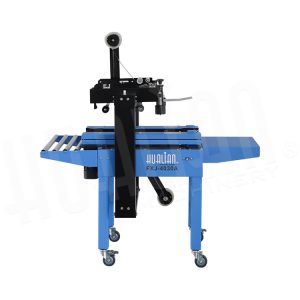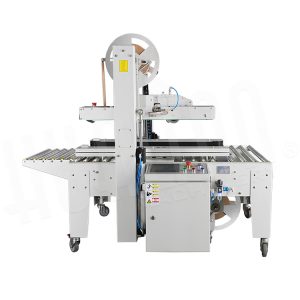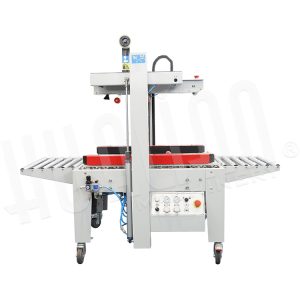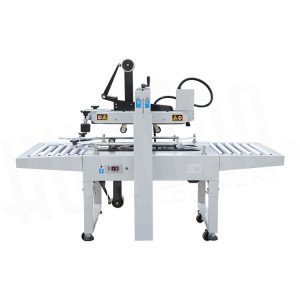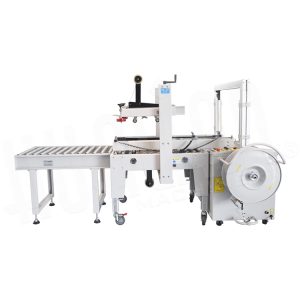Table of Contents
ToggleIntroduction
In today’s competitive manufacturing and food processing industries, vacuum packaging machines have become essential equipment for preserving product freshness, extending shelf life, and ensuring safe storage and transportation. From the meat and seafood industry to electronics, pharmaceuticals, and even industrial parts, vacuum packaging equipment plays a critical role in maintaining product quality by removing air and sealing items in protective packaging.
Whether you’re packaging fresh cuts of meat, bulk grains, delicate electronics, or prepared meals, the efficiency and hygiene provided by vacuum sealer machines make them indispensable across many sectors.
Wide Applications of Vacuum Packaging Machines

Vacuum packaging machines are used in a wide range of industries, including:
- Food processing and distribution: Packaging fresh meats, fish, cheeses, and ready-to-eat meals.
- Pharmaceuticals: Ensuring sterile conditions and protection for sensitive materials.
- Electronics: Shielding components from moisture and oxidation.
- Industrial manufacturing: Packaging precision tools, metal parts, or powders.
In particular, food vacuum packaging machines and meat vacuum packing machines are in high demand due to the rising consumer preference for clean-label, long-lasting packaged food.
What Is a Vacuum Packaging Machine?
Keep Products Fresh And Protected—Shop Our Vacuum Packaging Machines Today!
A vacuum packaging machine is a type of packaging equipment that removes air from a bag or container before sealing it. The primary purpose is to prevent the growth of aerobic bacteria and mold, reduce oxidation, and extend the product’s shelf life.
There are several types of vacuum machine packaging systems available, including:
- Chamber vacuum sealers: Ideal for high-volume operations and commercial settings.
- External vacuum sealers: Suitable for smaller-scale or home use.
- Automatic vacuum packing machines: Fully automated systems for continuous production lines.
These machines are often paired with different packaging materials, such as vacuum pouches, trays, or thermoforming films, depending on the product and application.
How Do Vacuum Packaging Machine Work? 5 Steps
Understanding the core process of vacuum packaging is important for selecting the right equipment and optimizing product handling. Below are the five key steps in the vacuum packaging process, typically used by chamber vacuum sealers or automatic vacuum packing machines.
Place the Product into the Packaging Container
The first step is simple but critical: place the product—whether it’s fresh meat, vegetables, or a batch of electronic components—into a vacuum bag or container. The product must be clean, dry, and properly arranged to avoid air pockets and ensure an even vacuum.
Initiate the Vacuum Cycle

Once the product is in place, the bag is positioned within the vacuum chamber, and the machine lid is closed. For automatic vacuum sealer machines, this step happens without manual intervention. The user then initiates the vacuum cycle, either by pressing a button or through a programmed control panel.
Remove Air to Create a Vacuum

The vacuum pump activates and begins extracting air from the chamber. As air is removed, the pressure inside the packaging bag drops. This vacuum environment helps prevent spoilage, oxidation, and contamination. Some vacuum sealer machines allow for adjustable vacuum strength based on the product’s delicacy.
Seal the Package
Once the air is removed, the machine engages a heat-sealing bar that tightly seals the open edge of the vacuum bag. This ensures an airtight closure. In most chamber vacuum sealers, this step is automatic, while in some semi-automatic models, minimal manual input may be required.
Complete the Cycle and Release the Package
After sealing, the chamber is vented back to normal atmospheric pressure. This causes the sealed bag to compress tightly around the product. The lid then opens, and the sealed package is ready for labeling, boxing, or storage.
Seal Freshness Fast With Our Vacuum Packaging Machines!
Conclusion
Vacuum packaging machines are more than just tools—they’re strategic assets for quality control, safety, and efficiency. Whether you operate a meat processing facility, a food packaging business, or an industrial production line, investing in the right vacuum sealer, automatic vacuum packing machine, or chamber vacuum sealer can significantly enhance your product’s value and customer satisfaction.
By following the five-step vacuum packaging process—place, initiate, vacuum, seal, and release—businesses can ensure that their goods stay fresh, clean, and protected throughout the supply chain.
As consumer demand for food safety and extended shelf life continues to rise, the role of advanced vacuum packaging equipment will only become more important in modern manufacturing and distribution.











